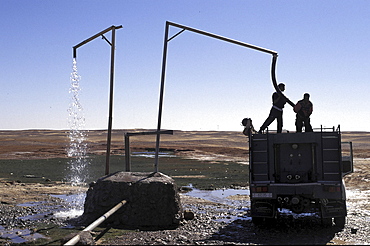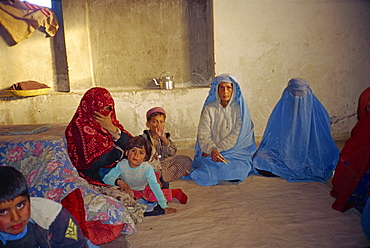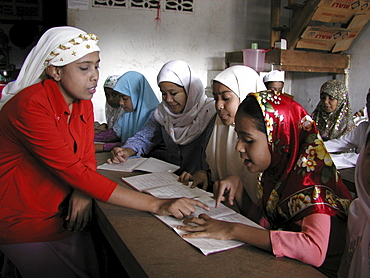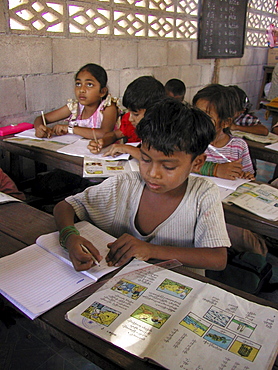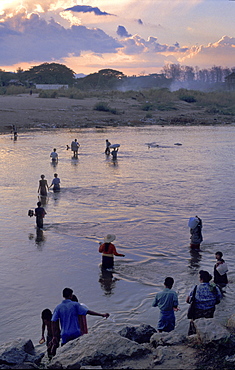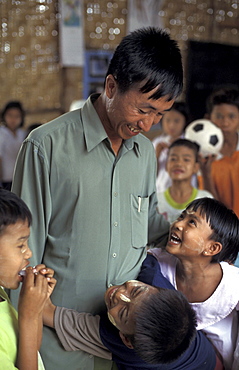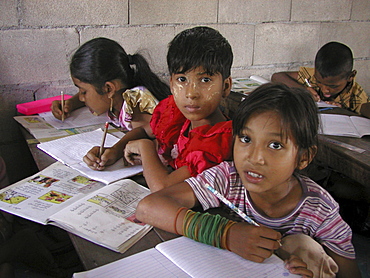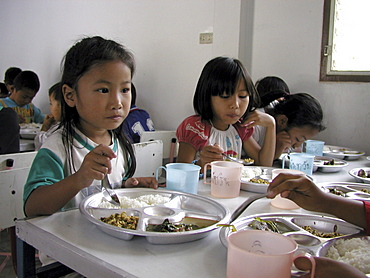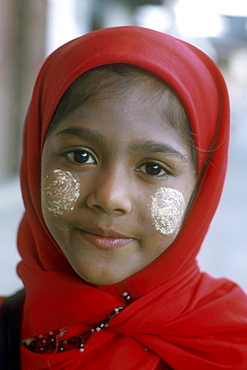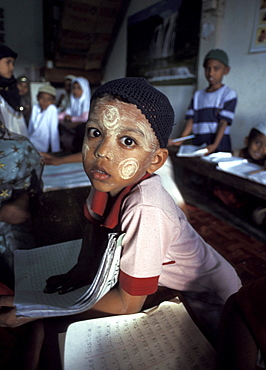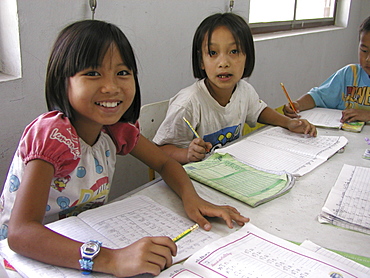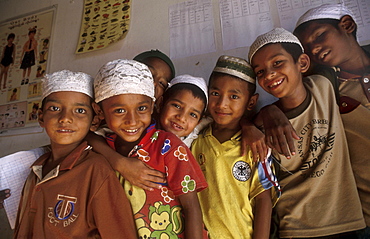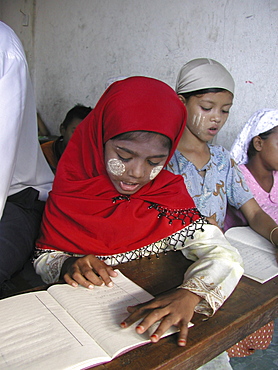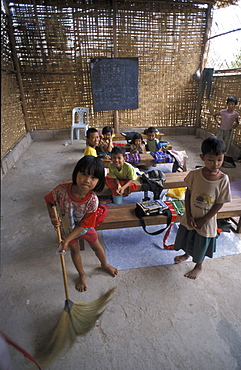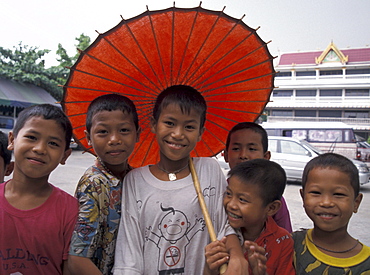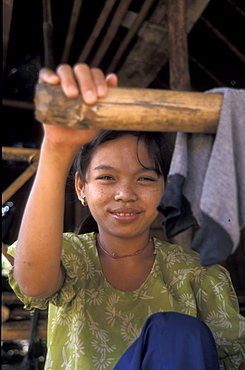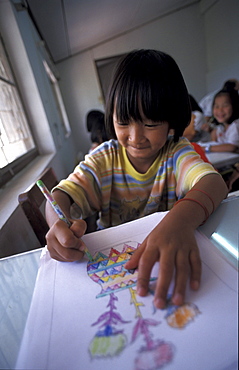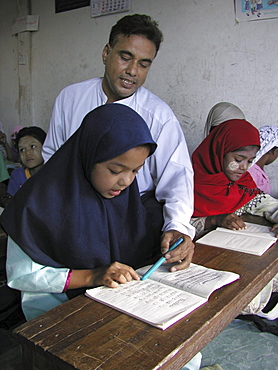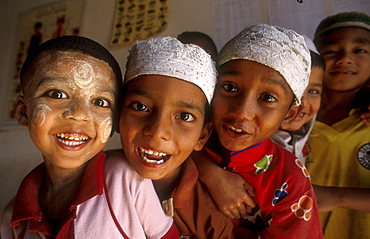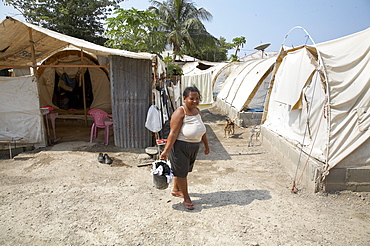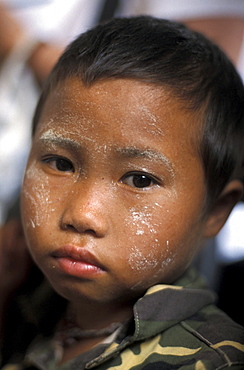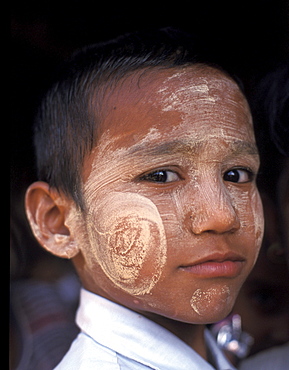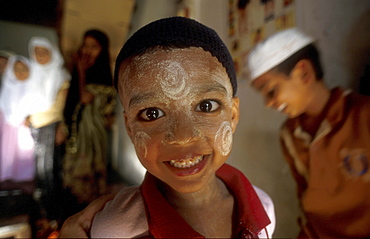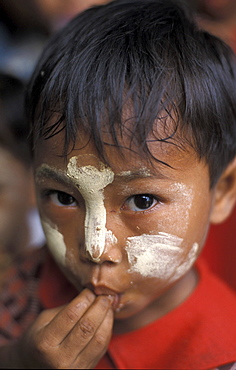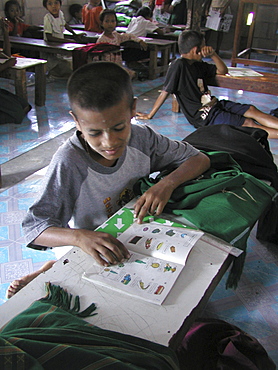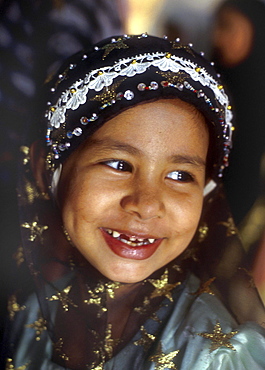Results
2 results found

Children with home-made toys pose for a photograph in an Internally Displaced Persons camp in the city of Hargeisa, capital of Somaliland, Somalia, Africa

In mid January 2015, a three day period of excessive rain brought unprecedented floods to the small poor African country of Malawi. It displaced nearly quarter of a million people, devastated 64,000 hectares of land, and killed several hundred people. This shot shows A Russian Mi8 helicopter being used by the United Nations, World Food Program to deliver food aid to areas still cut off by the flooding around Makhanga and Bangula.
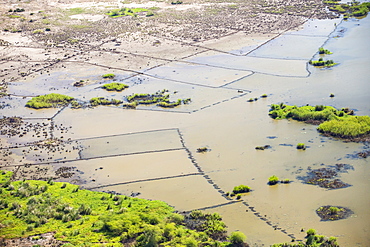
In mid January 2015, a three day period of excessive rain brought unprecedented floods to the small poor African country of Malawi. It displaced nearly quarter of a million people, devastated 64,000 hectares of land, and killed several hundred people. This shot taken from the air on a flight to Makhanga, which two months on, is still cut off by the floods when all rail and road connections were washed away, is looking down on the flood waters still sat on the flood plain, and the devastated farmland.
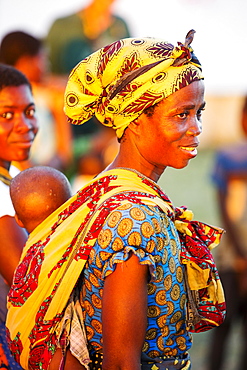
In mid January 2015, a three day period of excessive rain brought unprecedneted floods to the small poor African country of Malawi. It displaced nearly quarter of a million people, devastated 64,000 hectares of alnd, and killed several hundred people. This shot shows a mother and child in Chiteskesa refugee camp, near Mulanje.
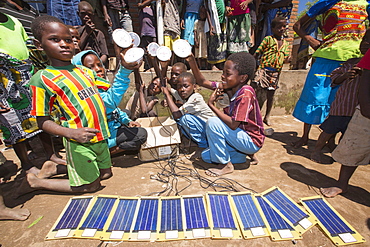
In mid January 2015, a three day period of excessive rain brought unprecedented floods to the small poor African country of Malawi. It displaced nearly quarter of a million people, devastated 64,000 hectares of land, and killed several hundred people. This shot shows solar powered lamps in a refugee camp near Chikwawa.
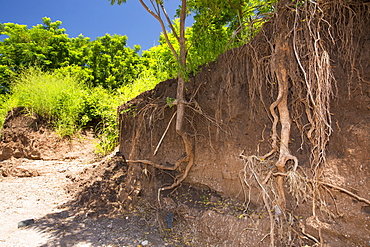
In mid January 2015, a three day period of excessive rain brought unprecedented floods to the small poor African country of Malawi. It displaced nearly quarter of a million people, devastated 64,000 hectares of land, and killed several hundred people. This shot shows tree roots exposed as the river bank was washed away near Chikwawa.
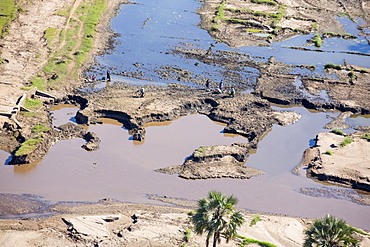
In mid January 2015, a three day period of excessive rain brought unprecedented floods to the small poor African country of Malawi. It displaced nearly quarter of a million people, devastated 64,000 hectares of land, and killed several hundred people. This shot taken from the air shows flood waters and farmland destroyed by the floods, with local farmers crossing their devastated fields.
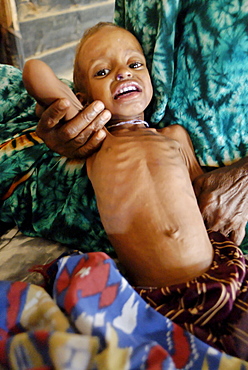
Kenya,dadaab refugees camp, somalian border gtz hospital ,the camps were set up around the town of dadaab beginning in 1991 when civil wars erupted on a grand scale in somalia (16 rival factions were involved). The wars, along with a prolonged drought, forced more than 900,000 somalis to flee to neighboring countries. Approximately 400,000 of them, many of whom were in a serious state of exhaustion and starvation, took refuge in kenya. Since then, a majority have returned to their country. However, some 131,000 somalis remain in kenya, and 110,000 are in dadaab, along with some sudanese, ugandans, and about 3,000 ethiopians women waiting the receive care from gtz ngo at the local hospital
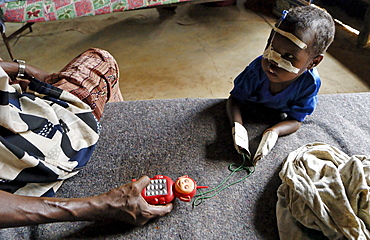
Kenya,dadaab refugees camp, somalian border gtz hospital ,the camps were set up around the town of dadaab beginning in 1991 when civil wars erupted on a grand scale in somalia (16 rival factions were involved). The wars, along with a prolonged drought, forced more than 900,000 somalis to flee to neighboring countries. Approximately 400,000 of them, many of whom were in a serious state of exhaustion and starvation, took refuge in kenya. Since then, a majority have returned to their country. However, some 131,000 somalis remain in kenya, and 110,000 are in dadaab, along with some sudanese, ugandans, and about 3,000 ethiopians women waiting the receive care from gtz ngo at the local hospital
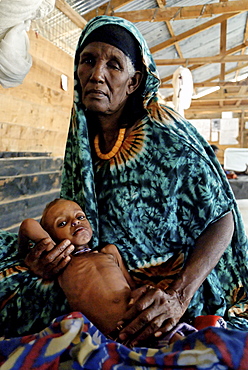
Kenya,dadaab refugees camp, somalian border gtz hospital ,the camps were set up around the town of dadaab beginning in 1991 when civil wars erupted on a grand scale in somalia (16 rival factions were involved). The wars, along with a prolonged drought, forced more than 900,000 somalis to flee to neighboring countries. Approximately 400,000 of them, many of whom were in a serious state of exhaustion and starvation, took refuge in kenya. Since then, a majority have returned to their country. However, some 131,000 somalis remain in kenya, and 110,000 are in dadaab, along with some sudanese, ugandans, and about 3,000 ethiopians women waiting the receive care from gtz ngo at the local hospital
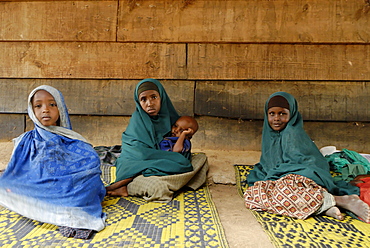
Kenya,dadaab refugees camp, somalian border gtz hospital ,the camps were set up around the town of dadaab beginning in 1991 when civil wars erupted on a grand scale in somalia (16 rival factions were involved). The wars, along with a prolonged drought, forced more than 900,000 somalis to flee to neighboring countries. Approximately 400,000 of them, many of whom were in a serious state of exhaustion and starvation, took refuge in kenya. Since then, a majority have returned to their country. However, some 131,000 somalis remain in kenya, and 110,000 are in dadaab, along with some sudanese, ugandans, and about 3,000 ethiopians women waiting the receive care from gtz ngo at the local hospital
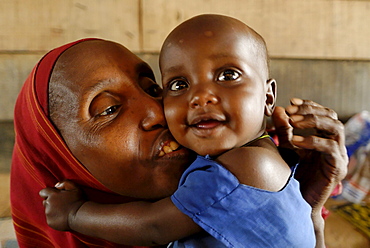
Kenya,dadaab refugees camp, somalian border gtz hospital ,the camps were set up around the town of dadaab beginning in 1991 when civil wars erupted on a grand scale in somalia (16 rival factions were involved). The wars, along with a prolonged drought, forced more than 900,000 somalis to flee to neighboring countries. Approximately 400,000 of them, many of whom were in a serious state of exhaustion and starvation, took refuge in kenya. Since then, a majority have returned to their country. However, some 131,000 somalis remain in kenya, and 110,000 are in dadaab, along with some sudanese, ugandans, and about 3,000 ethiopians women waiting the receive care from gtz ngo at the local hospital
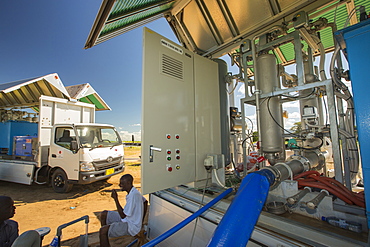
In mid January 2015, a three day period of excessive rain brought unprecedented floods to the small poor African country of Malawi. It displaced nearly quarter of a million people, devastated 64,000 hectares of land, and killed several hundred people. This shot shows a specialist truck that takes water straight from the river and purifies it to drinking standards, which is then used in the many flood refugee camps in the Shire valley.
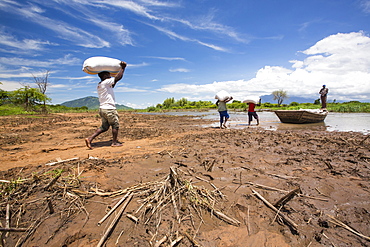
In mid January 2015, a three day period of excessive rain brought unprecedneted floods to the small poor African country of Malawi. It displaced nearly quarter of a million people, devastated 64,000 hectares of alnd, and killed several hundred people. This shot shows a food being ferried across a river near Phalombe after the bridge was washed away.
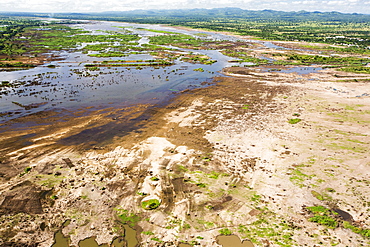
In mid January 2015, a three day period of excessive rain brought unprecedented floods to the small poor African country of Malawi. It displaced nearly quarter of a million people, devastated 64,000 hectares of land, and killed several hundred people. This shot shows the scale of the flood destruction, with ruined farmland, from the air.
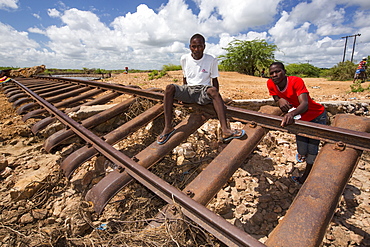
In mid January 2015, a three day period of excessive rain brought unprecedented floods to the small poor African country of Malawi. It displaced nearly quarter of a million people, devastated 64,000 hectares of land, and killed several hundred people. This shot shows a railway line that was washed away in Bangula.
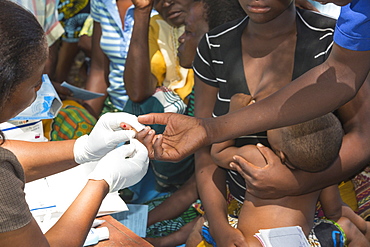
In mid January 2015, a three day period of excessive rain brought unprecedented floods to the small poor African country of Malawi. It displaced nearly quarter of a million people, devastated 64,000 hectares of land, and killed several hundred people. This shot shows A Medicin Sans Frontieres clinic in Makhanga testing local people for malaria, many of whom proved positive for the disease, as a result of the drying up flood waters providing ideal breeding grounds for mosquitoes.
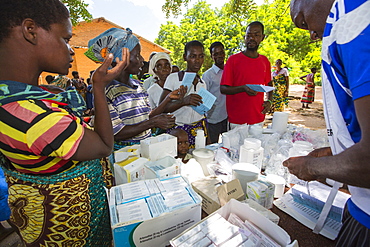
January 2015 saw a three day period of excessive rain which brought unprecedented floods to the small poor African country of Malawi. It displaced nearly quarter of a million people, devastated 64,000 hectares of land, and killed several hundred people. This shot shows A Medicin Sans Frontieres clinic in Makhanga providing Malaria treatment drugs to local people, many of whom now have malaria, as a result of the drying up flood waters providing ideal breeding grounds for mosquitoes.
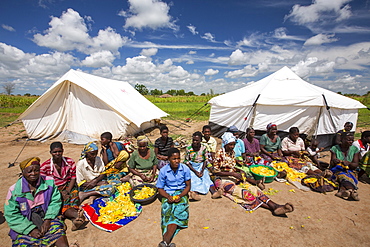
In mid January 2015, a three day period of excessive rain brought unprecedented floods to the small poor African country of Malawi. It displaced nearly quarter of a million people, devastated 64,000 hectares of land, and killed several hundred people. This shot shows displaced people in Baani refugee camp near Phalombe, preparing pumpkin flowers to eat.
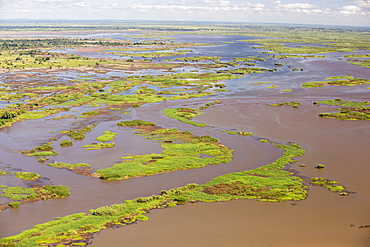
In mid January 2015, a three day period of excessive rain brought unprecedented floods to the small poor African country of Malawi. It displaced nearly quarter of a million people, devastated 64,000 hectares of land, and killed several hundred people. This shot taken from the air on a flight to Makhanga, which two months on, is still cut off by the floods when all rail and road connections were washed away, is looking down on the flood waters still sat on the flood plain.
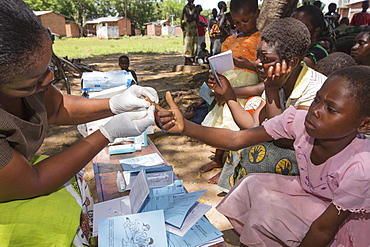
January 2015 saw a three day period of excessive rain which brought unprecedented floods to the small poor African country of Malawi. It displaced nearly quarter of a million people, devastated 64,000 hectares of land, and killed several hundred people. This shot shows A Medicin Sans Frontieres clinic in Makhanga testing local people, many of whom now have malaria, as a result of the drying up flood waters providing ideal breeding grounds for mosquitoes.
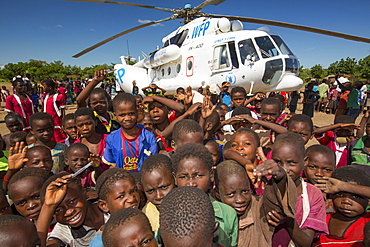
In mid January 2015, a three day period of excessive rain brought unprecedented floods to the small poor African country of Malawi. It displaced nearly quarter of a million people, devastated 64,000 hectares of land, and killed several hundred people. This shot shows A Russian Mi8 helicopter being used by the United Nations, World Food Program to deliver food aid to areas still cut off by the flooding, around Bangula and Mkhanga.
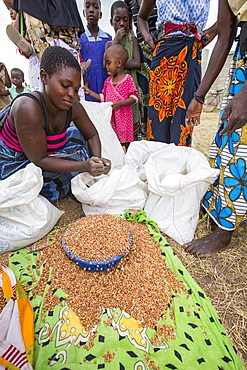
In mid January 2015, a three day period of excessive rain brought unprecedneted floods to the small poor African country of Malawi. It displaced nearly quarter of a million people, devastated 64,000 hectares of land, and killed several hundred people. This shot shows displaced people dividing up food aid in a refugee camp near Phalombe.
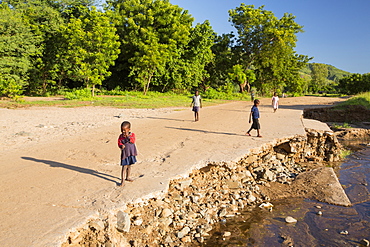
In mid January 2015, a three day period of excessive rain brought unprecedented floods to the small poor African country of Malawi. It displaced nearly quarter of a million people, devastated 64,000 hectares of land, and killed several hundred people. This shot shows a road and bridge washed away near Chikwawa.
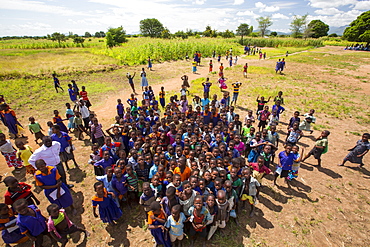
In mid January 2015, a three day period of excessive rain brought unprecedented floods to the small poor African country of Malawi. It displaced nearly quarter of a million people, devastated 64,000 hectares of land, and killed several hundred people. This shot shows displaced children in Baani refugee camp near Phalombe.
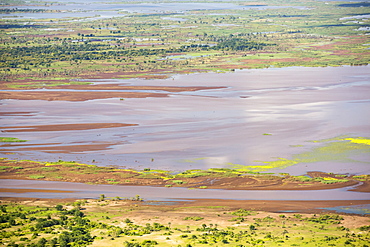
In mid January 2015, a three day period of excessive rain brought unprecedented floods to the small poor African country of Malawi. It displaced nearly quarter of a million people, devastated 64,000 hectares of land, and killed several hundred people. This shot taken from the air shows farmland buried under flood debris, and still flooded land.

In mid January 2015, a three day period of excessive rain brought unprecedented floods to the small poor African country of Malawi. It displaced nearly quarter of a million people, devastated 64,000 hectares of land, and killed several hundred people. This shot shows a drainage pipe that was washed away near Chikwawa.

In mid January 2015, a three day period of excessive rain brought unprecedneted floods to the small poor African country of Malawi. It displaced nearly quarter of a million people, devastated 64,000 hectares of alnd, and killed several hundred people. This shot shows a displaced women carrying water in the refugee camp of Chiteskesa refugee camp, near Mulanje.
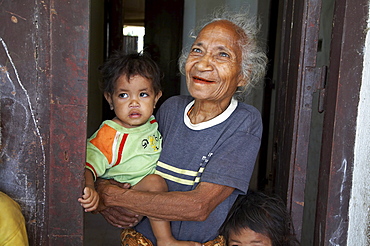
East timor. Camp for internally displaced people (idps) in the old hospital at baucau. Jacinta marques, and old woman and children at the camp
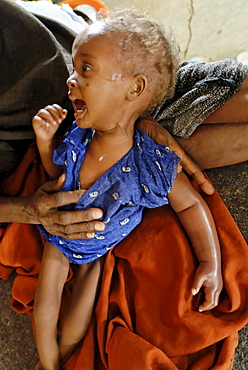
Kenya,dadaab refugees camp, somalian border gtz hospital ,the camps were set up around the town of dadaab beginning in 1991 when civil wars erupted on a grand scale in somalia (16 rival factions were involved). The wars, along with a prolonged drought, forced more than 900,000 somalis to flee to neighboring countries. Approximately 400,000 of them, many of whom were in a serious state of exhaustion and starvation, took refuge in kenya. Since then, a majority have returned to their country. However, some 131,000 somalis remain in kenya, and 110,000 are in dadaab, along with some sudanese, ugandans, and about 3,000 ethiopians women waiting the receive care from gtz ngo at the local hospital

Kenya,dadaab refugees camp, somalian border gtz hospital ,the camps were set up around the town of dadaab beginning in 1991 when civil wars erupted on a grand scale in somalia (16 rival factions were involved). The wars, along with a prolonged drought, forced more than 900,000 somalis to flee to neighboring countries. Approximately 400,000 of them, many of whom were in a serious state of exhaustion and starvation, took refuge in kenya. Since then, a majority have returned to their country. However, some 131,000 somalis remain in kenya, and 110,000 are in dadaab, along with some sudanese, ugandans, and about 3,000 ethiopians women waiting the receive care from gtz ngo at the local hospital . wounds due to boiling water for tea . lots of kids get burned by open flames fires into the camp as they play around without parents control

Kenya,dadaab refugees camp, somalian border gtz hospital ,the camps were set up around the town of dadaab beginning in 1991 when civil wars erupted on a grand scale in somalia (16 rival factions were involved). The wars, along with a prolonged drought, forced more than 900,000 somalis to flee to neighboring countries. Approximately 400,000 of them, many of whom were in a serious state of exhaustion and starvation, took refuge in kenya. Since then, a majority have returned to their country. However, some 131,000 somalis remain in kenya, and 110,000 are in dadaab, along with some sudanese, ugandans, and about 3,000 ethiopians women waiting the receive care from gtz ngo at the local hospital
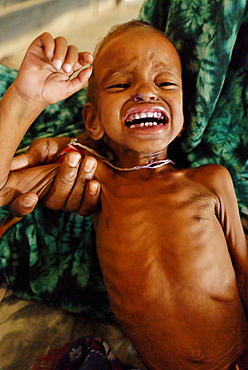
Kenya,dadaab refugees camp, somalian border gtz hospital ,the camps were set up around the town of dadaab beginning in 1991 when civil wars erupted on a grand scale in somalia (16 rival factions were involved). The wars, along with a prolonged drought, forced more than 900,000 somalis to flee to neighboring countries. Approximately 400,000 of them, many of whom were in a serious state of exhaustion and starvation, took refuge in kenya. Since then, a majority have returned to their country. However, some 131,000 somalis remain in kenya, and 110,000 are in dadaab, along with some sudanese, ugandans, and about 3,000 ethiopians women waiting the receive care from gtz ngo at the local hospital
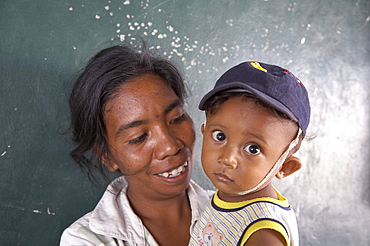
East timor. Camp for internally displaced people (idps) at the don bosco center in dili. Mother and child
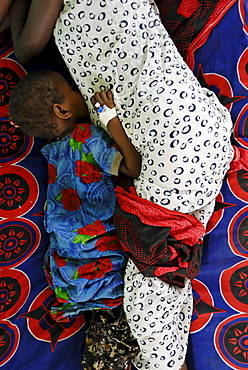
Kenya,dadaab refugees camp, somalian border gtz hospital ,the camps were set up around the town of dadaab beginning in 1991 when civil wars erupted on a grand scale in somalia (16 rival factions were involved). The wars, along with a prolonged drought, forced more than 900,000 somalis to flee to neighboring countries. Approximately 400,000 of them, many of whom were in a serious state of exhaustion and starvation, took refuge in kenya. Since then, a majority have returned to their country. However, some 131,000 somalis remain in kenya, and 110,000 are in dadaab, along with some sudanese, ugandans, and about 3,000 ethiopians women waiting the receive care from gtz ngo at the local hospital
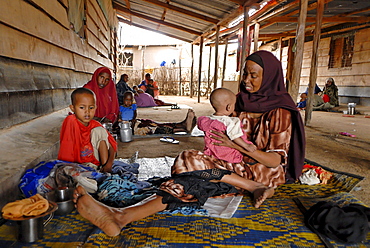
Kenya,dadaab refugees camp, somalian border gtz hospital ,the camps were set up around the town of dadaab beginning in 1991 when civil wars erupted on a grand scale in somalia (16 rival factions were involved). The wars, along with a prolonged drought, forced more than 900,000 somalis to flee to neighboring countries. Approximately 400,000 of them, many of whom were in a serious state of exhaustion and starvation, took refuge in kenya. Since then, a majority have returned to their country. However, some 131,000 somalis remain in kenya, and 110,000 are in dadaab, along with some sudanese, ugandans, and about 3,000 ethiopians women waiting the receive care from gtz ngo at the local hospital
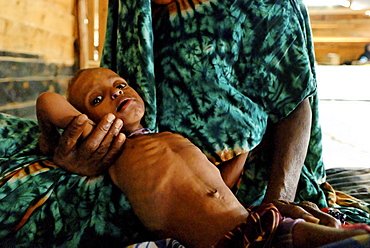
Kenya,dadaab refugees camp, somalian border gtz hospital ,the camps were set up around the town of dadaab beginning in 1991 when civil wars erupted on a grand scale in somalia (16 rival factions were involved). The wars, along with a prolonged drought, forced more than 900,000 somalis to flee to neighboring countries. Approximately 400,000 of them, many of whom were in a serious state of exhaustion and starvation, took refuge in kenya. Since then, a majority have returned to their country. However, some 131,000 somalis remain in kenya, and 110,000 are in dadaab, along with some sudanese, ugandans, and about 3,000 ethiopians women waiting the receive care from gtz ngo at the local hospital
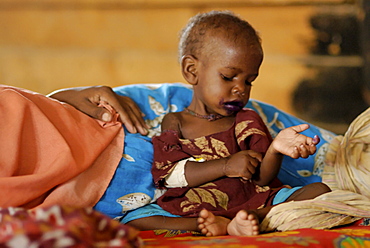
Kenya,dadaab refugees camp, somalian border gtz hospital ,the camps were set up around the town of dadaab beginning in 1991 when civil wars erupted on a grand scale in somalia (16 rival factions were involved). The wars, along with a prolonged drought, forced more than 900,000 somalis to flee to neighboring countries. Approximately 400,000 of them, many of whom were in a serious state of exhaustion and starvation, took refuge in kenya. Since then, a majority have returned to their country. However, some 131,000 somalis remain in kenya, and 110,000 are in dadaab, along with some sudanese, ugandans, and about 3,000 ethiopians women waiting the receive care from gtz ngo at the local hospital .malnourrish child
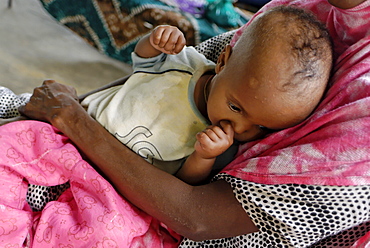
Kenya,dadaab refugees camp, somalian border gtz hospital ,the camps were set up around the town of dadaab beginning in 1991 when civil wars erupted on a grand scale in somalia (16 rival factions were involved). The wars, along with a prolonged drought, forced more than 900,000 somalis to flee to neighboring countries. Approximately 400,000 of them, many of whom were in a serious state of exhaustion and starvation, took refuge in kenya. Since then, a majority have returned to their country. However, some 131,000 somalis remain in kenya, and 110,000 are in dadaab, along with some sudanese, ugandans, and about 3,000 ethiopians women waiting the receive care from gtz ngo at the local hospital
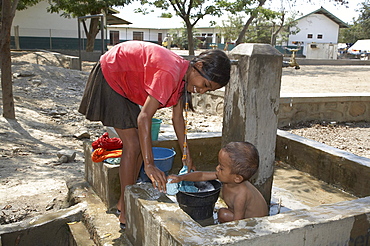
East timor. Camp for internally displaced people (idps) at the don bosco center in dili. Girl collecting water and washing baby at faucet

In mid January 2015, a three day period of excessive rain brought unprecedented floods to the small poor African country of Malawi. It displaced nearly quarter of a million people, devastated 64,000 hectares of land, and killed several hundred people. This shot shows a road bridge destroyed near Chikwawa.
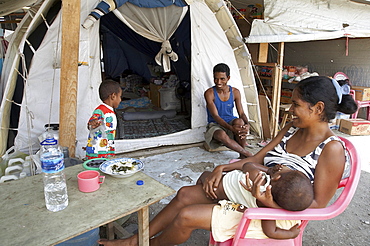
East timor. Family in front of their tent at the camp for internally displaced people (idps) located at the police academy in dili
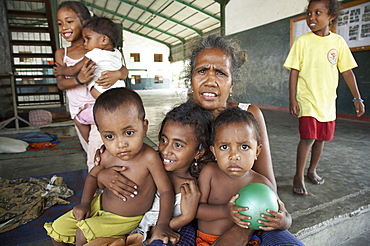
East timor. Camp for internally displaced people (idps) at the don bosco center in dili. Woman with her children
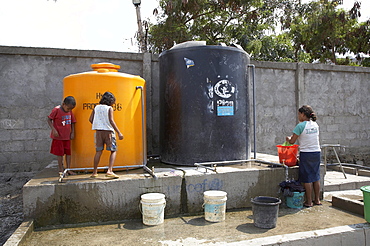
East timor. Camp for internally displaced people (idps) at the don bosco center in dili. Water tanks
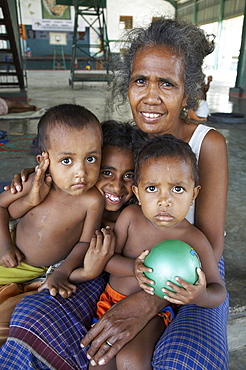
East timor. Camp for internally displaced people (idps) at the don bosco center in dili. Woman with her children
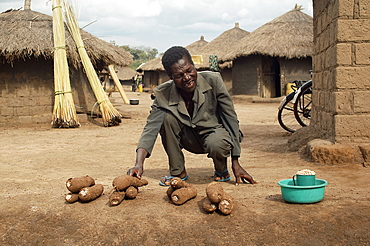
An IDP camp (internally displaced people) in Te-Tugu district of Northern Uganda has been created to accommodate the mass of Ugandan refugees fleeing the LRA (Lords Resistance Army) who are fighting the Ugandan government and its people. With all attempts to be self-sufficient in these camps, Yams are an important vegetable for survival. The tubers can be stored up to six months without refrigeration, which makes them a valuable resource for the yearly period of food scarcity at the beginning of the wet season. Te-Tugu, Uganda, East Africa
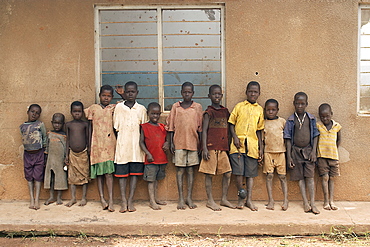
An IDP camp (internally displaced people) in Amuru district of Northern Uganda has been created to accommodate the mass of Ugandan refugees fleeing the LRA (Lords Resistance Army) who are fighting the Ugandan government and its people. Here you can see some of the many children, lined up by their school building. Amuru, Uganda, East Africa

Using ancient techniques of wattle & daub, you can see on this hut how it was built. This sustainable and accessible technique is finnished off with a 20th century roof addition. Jinja, Uganda, East Africa

Time off from domestic chores and hard core playing, mothers rest in the shade with their children, listening to the radio. Gulu Town, Uganda, East Africa

An IDP camp (internally displaced people) in Te-Tugu district of Northern Uganda has been created to accommodate the mass of Ugandan refugees fleeing the LRA (Lords Resistance Army) who are fighting the Ugandan government and its people. With all attempts to be self-sufficient in these camps, the women have to work the land as well as look after dependants. Te-Tugu, Uganda, East Africa
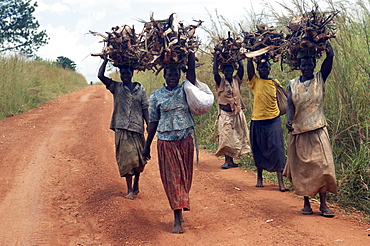
Domestic duties in Uganda include finding wood for burning and domestic improvements. Here a group of African women are carrying the load back on their heads. Gulu Town, Uganda, East Africa
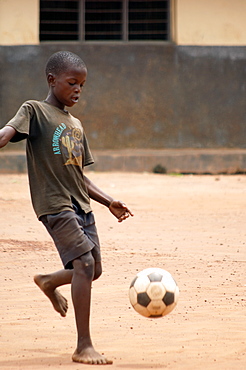
Young African boy playing football in the school yard. Guly Town, northern Uganda. Gulu Town, Uganda, East Africa
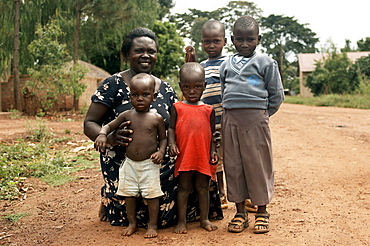
Proud mother shows off her children for a photo opportunity, on the road near their home. They are without dad who will be out working. Gulu Town, Uganda. Gulu Town, Uganda, East Africa
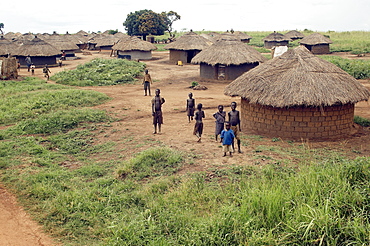
An IDP camp (internally displaced people) in Amuru district of Northern Uganda has been created to accommodate the mass of Ugandan refugees fleeing the LRA (Lords Resistance Army) who are fighting the Ugandan government and its people. Accommodation are basic mud huts, but always well kept. Amuru, Uganda, East Africa
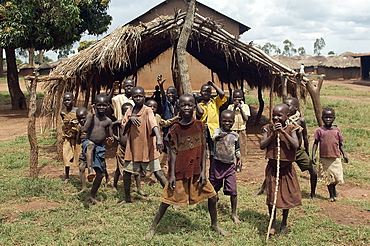
An IDP camp (internally displaced people) in Amuru district of Northern Uganda has been created to accommodate the mass of Ugandan refugees fleeing the LRA (Lords Resistance Army) who are fighting the Ugandan government and its people. Here are some of the many children from the camp showing off in front of camera. Amuru, Uganda, East Africa
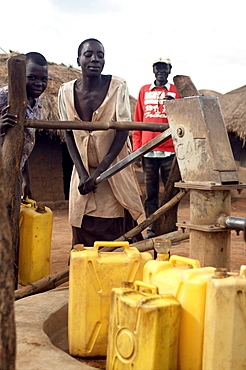
An IDP camp (internally displaced people) in Te-Tugu district of Northern Uganda has been created to accommodate the mass of Ugandan refugees fleeing the LRA (Lords Resistance Army) who are fighting the Ugandan government and its people. Here, women are filling up water from a deep water well. Te-Tugu, Uganda, East Africa

An IDP camp (internally displaced people) in Te-Tugu district of Northern Uganda has been created to accommodate the mass of Ugandan refugees fleeing the LRA (Lords Resistance Army) who are fighting the Ugandan government and its people. Although accommodation is basic- mainly mud huts, they are impeccably maintained, instilling a real sense of pride in the community. Te-Tugu, Uganda, East Africa
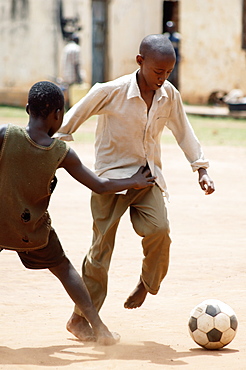
Two African boys committed to the tackle, playing football in the school yard. Gulu Town, Northern Uganda. . Gulu Town, Uganda, East Africa
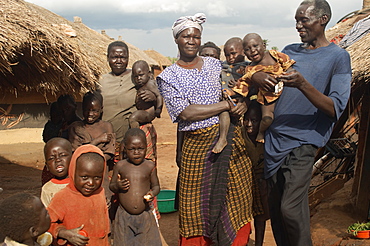
An IDP camp (internally displaced people) in Te-Tugu district of Northern Uganda has been created to accommodate the mass of Ugandan refugees fleeing the LRA (Lords Resistance Army) who are fighting the Ugandan government and its people. Children are plentiful in these camps and are far safer here than neighbouring villages. Te-Tugu, Uganda, East Africa
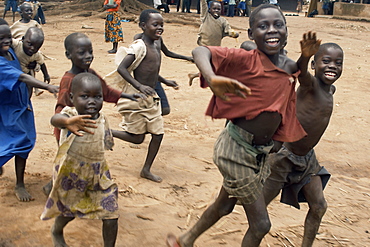
An IDP camp (internally displaced people) in Amuru district of Northern Uganda has been created to accommodate the mass of Ugandan refugees fleeing the LRA (Lords Resistance Army) who are fighting the Ugandan government and its people. With little to do for the children, foreign visitors are a welcome distraction and they are really happy to see you. Amuru, Uganda, East Africa
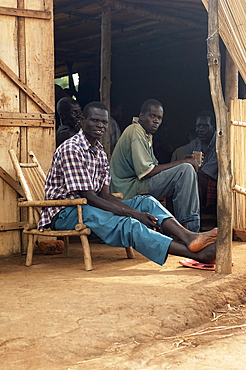
An IDP camp (internally displaced people) in Te-Tugu district of Northern Uganda has been created to accommodate the mass of Ugandan refugees fleeing the LRA (Lords Resistance Army) who are fighting the Ugandan government and its people. Te-Tugu, Uganda, East Africa
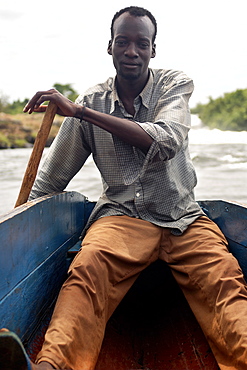
Bujagali Falls is a waterfall near Jinja in Uganda where the Nile River comes out of Lake Victoria, sometimes considered the source of the Nile. This is a very popular tourist attraction for people wanting to raft on the white water rapids. Bujagali Falls, Jinja, Uganda, East Africa
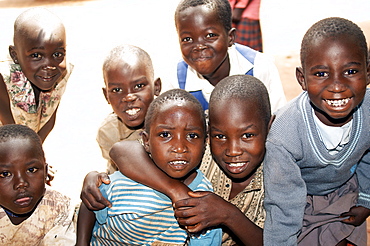
Young residents enjoy smiling in front of camera, Gulu Town, Northwest Uganda. Gulu Town, Uganda, East Africa
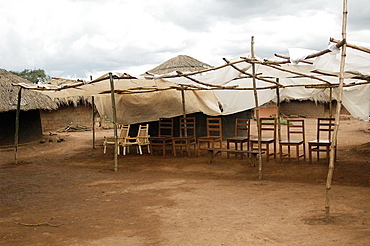
An IDP camp (internally displaced people) in Te-Tugu district of Northern Uganda has been created to accommodate the mass of Ugandan refugees fleeing the LRA (Lords Resistance Army) who are fighting the Ugandan government and its people. Te-Tugu, Uganda, East Africa
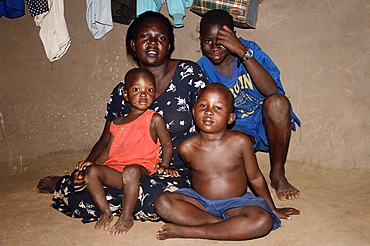
Inside a typical mud hut, commonly found in Gulu Town, Northwest Uganda. Family are without father who is out working during the day. Gulu Town, Uganda, East Africa
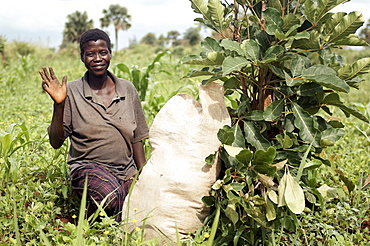
An IDP camp (internally displaced people) in Te-Tugu district of Northern Uganda has been created to accommodate the mass of Ugandan refugees fleeing the LRA (Lords Resistance Army) who are fighting the Ugandan government and its people. Although heavily reliant on aid, they are encouraged to produce much of their own food. Te-Tugu, Uganda, East Africa
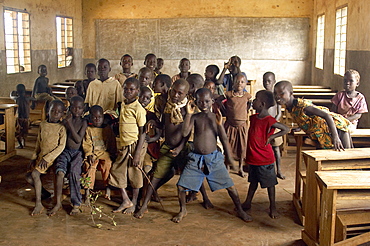
An IDP camp (internally displaced people) in Amuru district of Northern Uganda has been created to accommodate the mass of Ugandan refugees fleeing the LRA (Lords Resistance Army) who are fighting the Ugandan government and its people. Inside one of the classrooms, the children are more interested in the camera than study. Amuru, Uganda, East Africa

An IDP camp (internally displaced people) in Te-Tugu district of Northern Uganda has been created to accommodate the mass of Ugandan refugees fleeing the LRA (Lords Resistance Army) who are fighting the Ugandan government and its people. Te-Tugu, Uganda, East Africa
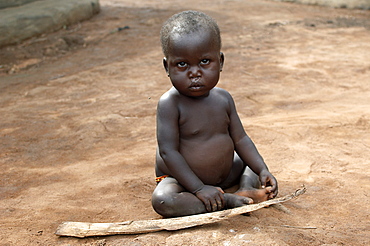
An IDP camp (internally displaced people) in Amuru district of Northern Uganda has been created to accommodate the mass of Ugandan refugees fleeing the LRA (Lords Resistance Army) who are fighting the Ugandan government and its people. Here a young child has found a stick to play with. Amuru, Uganda, East Africa

An IDP camp (internally displaced people) in Amuru district of Northern Uganda has been created to accommodate the mass of Ugandan refugees fleeing the LRA (Lords Resistance Army) who are fighting the Ugandan government and its people. Having fun with the children, this man is mocking my actions with a stick. With a little imagination, you can see this stick is a camera...!. Amuru, Uganda, East Africa
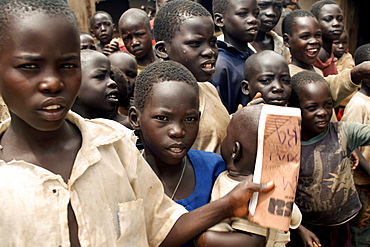
An IDP camp (internally displaced people) in Amuru district of Northern Uganda has been created to accommodate the mass of Ugandan refugees fleeing the LRA (Lords Resistance Army) who are fighting the Ugandan government and its people. An inquisitive teenage boy is holding an exercise book. Amuru, Uganda, East Africa

